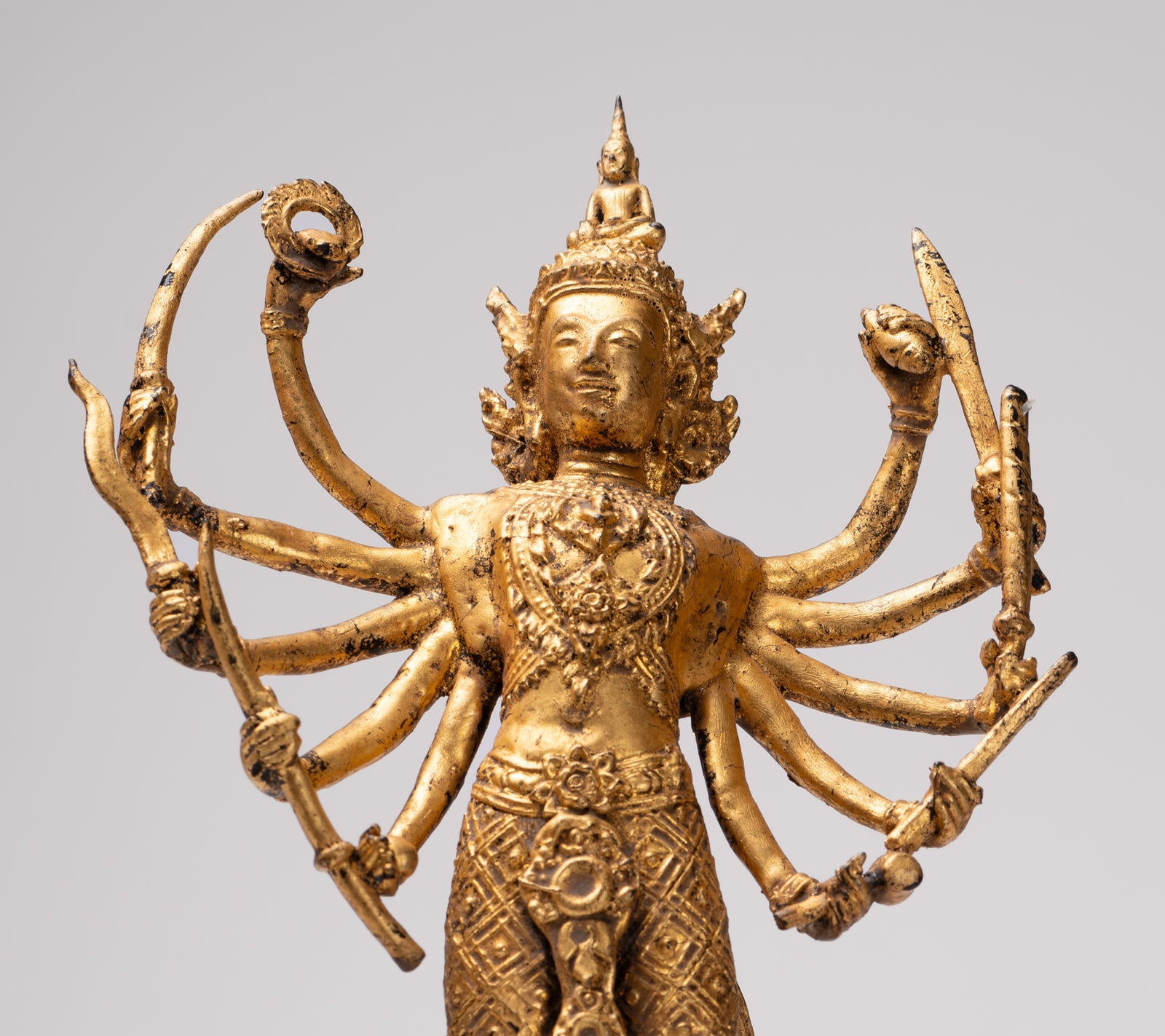
The Rise of Shiva in Thailand: Bridging Cultures and Spirituality
The story of Shiva's rise in Thailand is a captivating exploration of cultural exchange, religious transformation, and artistic integration.
While predominantly known as a Buddhist nation today, Thailand’s history reveals deep influences from Hindu traditions, particularly the worship of Shiva, which played a pivotal role in shaping its early spiritual landscape and cultural identity.
Historical Context
The introduction of Hinduism to Thailand dates back to the early centuries CE, driven by Indian merchants, Brahmin scholars, and cultural exchanges between the Indian subcontinent and Southeast Asia. These influences were instrumental in establishing Hindu practices and deities in the region, with Shiva emerging as a significant figure within Thai spiritual life.
During the Dvaravati and Khmer periods (6th to 13th centuries CE), Hinduism thrived alongside Buddhism. The Khmer Empire, which extended into present-day Thailand, strongly promoted the worship of Hindu deities, particularly Shiva. This period saw Shiva’s incorporation into royal and religious practices, reflecting his association with power, protection, and renewal.
Shiva and Thai Kingship
In early Thai history, Shiva was often linked to the concept of divine kingship, mirroring the "devaraja" (god-king) ideology prominent in Khmer culture. This doctrine positioned the king as an earthly embodiment of Shiva, underscoring his role as both a spiritual and temporal leader. The consecration of Shiva’s sacred symbol, the linga, was a central ritual in coronation ceremonies, symbolizing the unity of divine authority and royal governance.
The influence of Shiva in royal practices persisted even as Buddhism became the dominant religion. Thai kings adopted Sanskrit titles such as “Rama” and “Chakravartin,” and Shiva’s imagery often appeared in court rituals and royal insignia.
Architectural and Artistic Legacy
Shiva’s rise in Thailand is vividly illustrated in its ancient temples and sculptures. Hindu temples from the Khmer era, such as Phanom Rung and Prasat Hin Phimai, were dedicated to Shiva and feature architectural designs inspired by Mount Meru, the mythical home of the gods. These temples house intricate carvings depicting Shiva in various forms, including Nataraja, the cosmic dancer, and Ardhanarishvara, the composite form of Shiva and Parvati.
In addition to architecture, Shiva’s influence can be seen in Thai art. Stone sculptures, bronze statues, and bas-reliefs from the Khmer period frequently depict Shiva’s attributes, such as the trident (trishula), the crescent moon, and the serpent around his neck. These artistic representations not only highlight the deity’s prominence but also reflect the synthesis of Indian and Southeast Asian artistic styles.
Rituals and Practices
The worship of Shiva in Thailand involved elaborate rituals led by Brahmin priests, who performed ceremonies to invoke the deity’s blessings for prosperity and protection. Offerings of flowers, incense, and food were common, accompanied by the chanting of Sanskrit mantras. Festivals honoring Shiva, such as Maha Shivaratri, were celebrated with devotion, drawing communities together in acts of collective worship.
Even as Thailand transitioned to a predominantly Buddhist nation, many Hindu rituals and symbols associated with Shiva were seamlessly integrated into Thai Buddhism. For instance, the Brahmin priests who serve the Thai monarchy continue to perform Hindu-inspired ceremonies, preserving the legacy of Shiva worship.
Decline and Transformation
The prominence of Shiva worship began to decline as Theravāda Buddhism gained ascendancy in Thailand during the Sukhothai period (13th century CE). However, instead of disappearing entirely, elements of Shaivism were absorbed into Buddhist practices, creating a syncretic religious tradition unique to Thailand.
Today, Shiva’s presence endures in Thai culture through Brahminical rituals, Hindu-inspired festivals, and artistic motifs. Shrines dedicated to Shiva, such as the Shiva Shrine in Bangkok, continue to attract devotees, illustrating the lasting impact of his worship.
Conclusion
The rise of Shiva in Thailand is a testament to the enduring power of cultural exchange and adaptation. From ancient Khmer temples to modern-day shrines, Shiva’s influence remains woven into the fabric of Thai spirituality and heritage.
By exploring this legacy, we gain deeper insights into Thailand’s historical journey and its unique ability to harmonize diverse religious traditions into a cohesive cultural identity.


